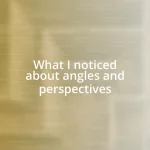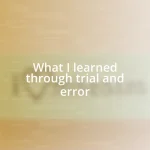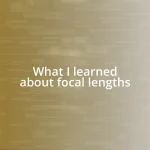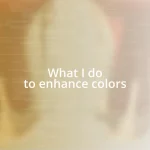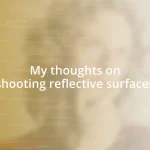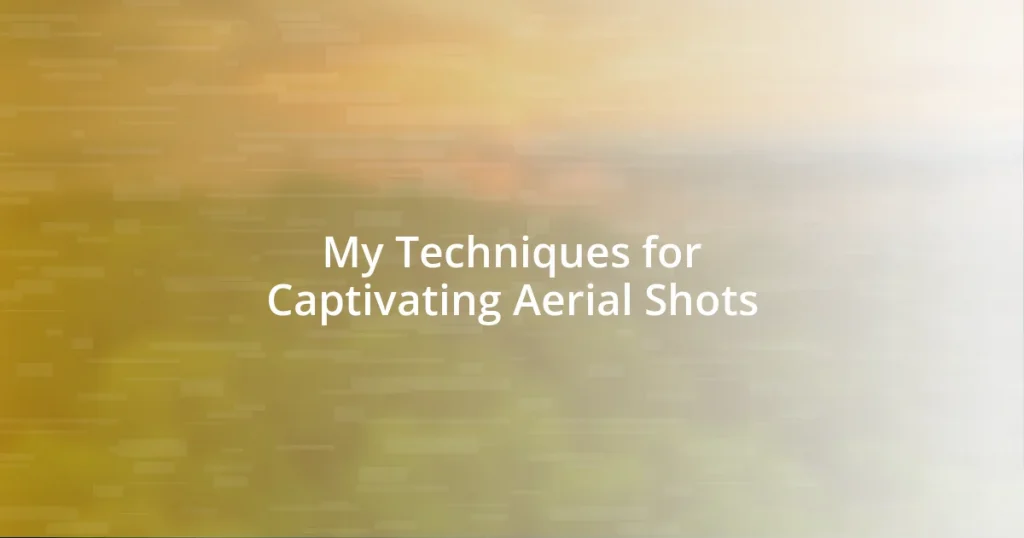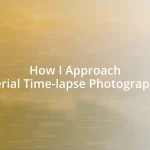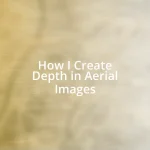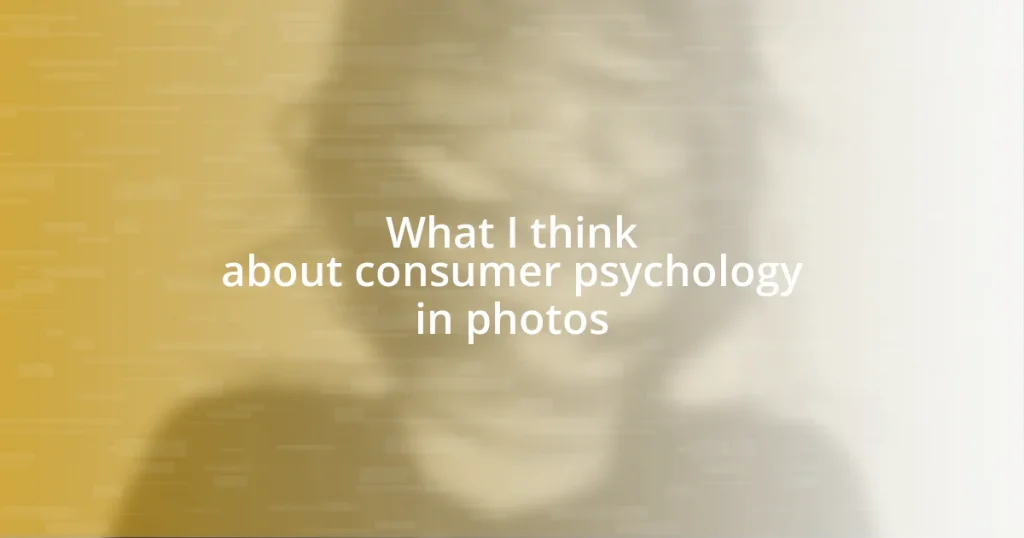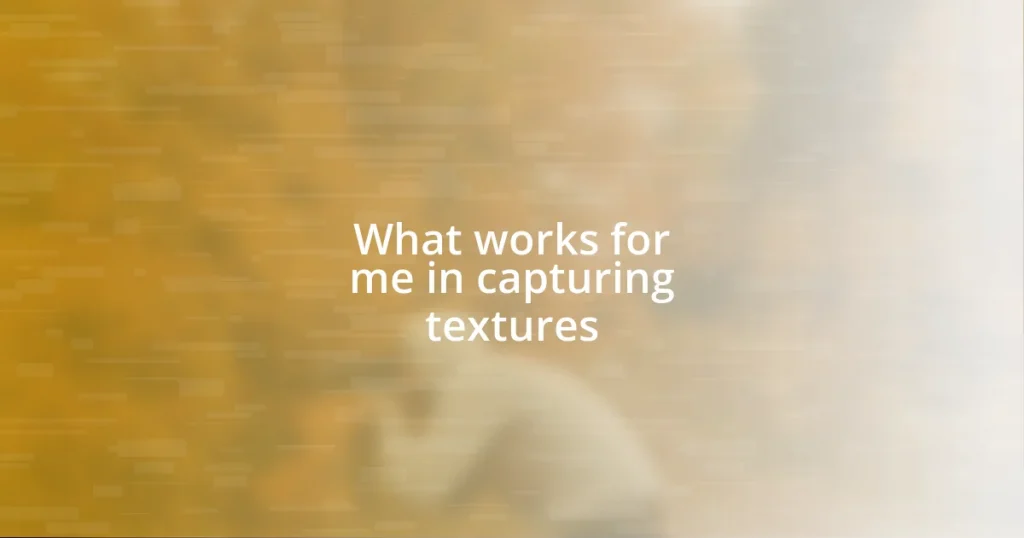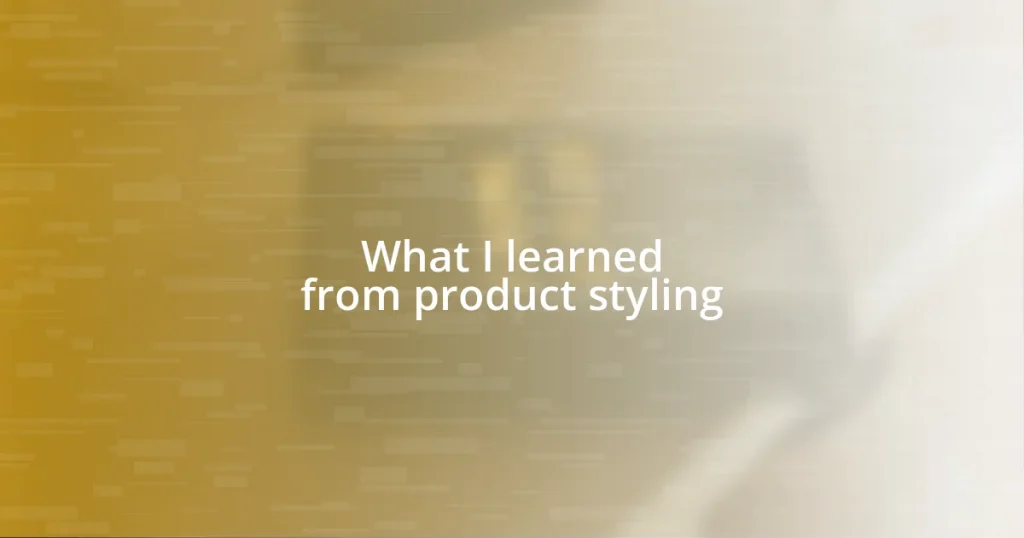Key takeaways:
- Aerial photography transforms perspectives, emphasizing the importance of framing, timing, and equipment quality.
- Composition techniques, like using leading lines and the rule of thirds, can significantly enhance the visual appeal of aerial shots.
- Safety is paramount; understanding weather, local regulations, and establishing a buffer zone are essential for responsible drone operation.
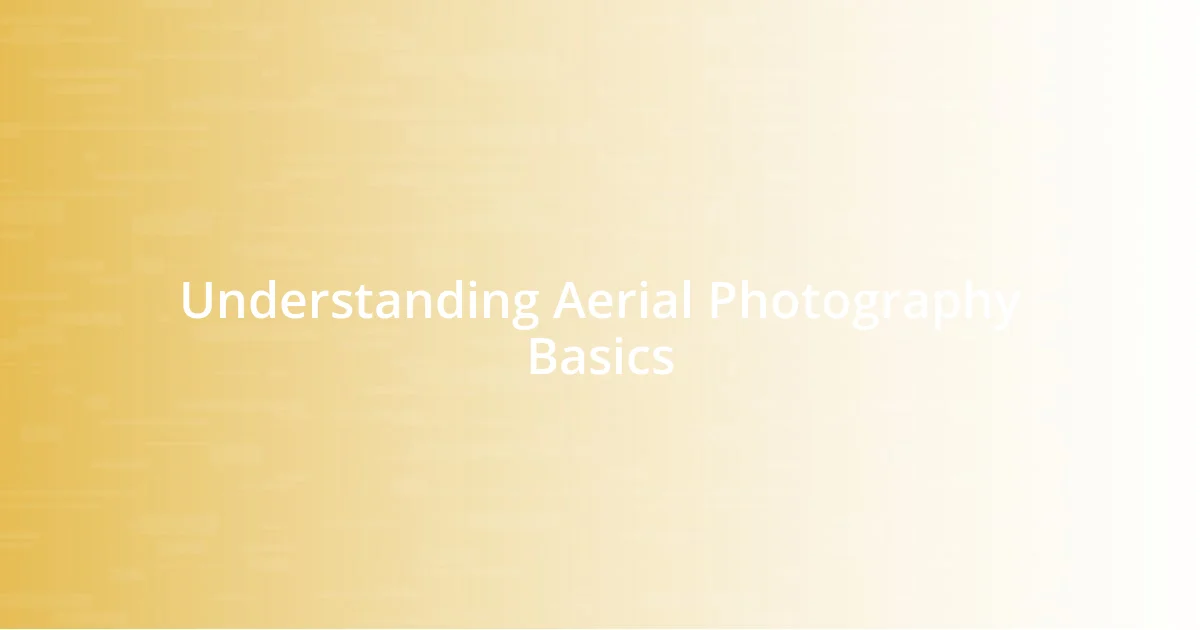
Understanding Aerial Photography Basics
Aerial photography is fundamentally about perspective. When I first took to the skies with my drone, I was struck by how dramatically familiar landscapes transformed. Have you ever gazed at your neighborhood from above? The patterns, shapes, and textures simply emerge in a way that you can’t quite appreciate on the ground.
Understanding the basics involves grasping key elements like framing and lighting. I remember the first time I captured a sunrise over a coastal cliff; the warm hues playing against the cool ocean was a lesson in timing. Can you imagine missing that moment because of poor planning? Knowing when to shoot can make or break your aerial shots.
Another critical aspect is equipment selection. My initial foray into aerial photography used a basic drone, and while it worked, I quickly discovered the advantages of investing in higher-quality equipment. Think about your own gear—do you have the right tools to capture stunning visuals? Investing in a good camera and stabilizer has transformed my work, leading to smoother footage and striking images.

Key Equipment for Aerial Shots
When it comes to capturing breathtaking aerial shots, having the right equipment is crucial. I remember my first experience with a mid-range drone; it delivered decent quality but often left me wanting more. Now, I always opt for professional drones like the DJI Mavic 3, which offers improved stability and higher resolution, allowing me to truly showcase the beauty of a landscape.
In addition to drones, the camera you pair with can significantly impact your results. Using a camera with a larger sensor can enhance image quality, particularly in low light conditions. One of my most memorable shoots involved a sunset over a sprawling city. The rich colors and fine details captured by my full-frame camera left me in awe. Did you know that lens choice also matters? A wide-angle lens allows for more expansive views, which is essential when showcasing vast landscapes from above.
Stabilizing equipment is another key element that can’t be overlooked. When I first started, I didn’t fully grasp the necessity of a gimbal for my camera, leading to shaky footage. Once I added a gimbal to my setup, everything changed. Smooth, fluid shots transformed my aerial videos, providing a professional edge that I had previously missed out on. Think of it as upgrading from a draft to a polished masterpiece; the difference is simply night and day.
| Equipment Type | Example/Model |
|---|---|
| Drone | DJI Mavic 3 |
| Camera | Canon EOS R |
| Lens | 16-35mm f/2.8 |
| Stabilizer/Gimbal | Ronin-S |

Composition Techniques for Aerial Shots
When composing aerial shots, it’s essential to consider the rule of thirds, which enhances visual interest. I can recall one afternoon hovering over a winding river; by positioning it along one of the grid lines instead of centering it, I created a more dynamic composition. It’s a simple technique but one that can transform a mundane shot into something captivating.
Here are some techniques to elevate your aerial compositions:
- Leading Lines: Utilize natural features, like roads or rivers, as guides that draw the viewer’s eye into the frame.
- Framing: Incorporate elements from above—like tree branches or rooftops—to create a frame around your subject.
- Symmetry: Seek out symmetrical landscapes, as they often create a sense of harmony and balance in your composition.
- Patterns and Textures: Look for repetitive shapes or textures, such as fields or city layouts, which can add visual intrigue, elevating your shot to another level.
Variation in altitude and angle is also crucial. I remember adjusting my drone height dramatically during a shoot over a rugged mountain range. The higher perspective revealed patterns in the terrain that were simply lost at lower altitudes. Shifting angles can bring out unique stories in the landscapes, so don’t hesitate to experiment.

Lighting Considerations for Aerial Photography
Lighting plays a vital role in aerial photography, and I’ve learned that timing is everything. The golden hour—shortly after sunrise or before sunset—produces soft, warm light that can transform your aerial shots from ordinary to extraordinary. I vividly recall hovering over a forest just as the sun dipped below the horizon; the way the light danced through the trees was nothing short of magical.
Cloud cover can also affect lighting conditions dramatically. A cloudy day might seem uninviting, but I find that it often disperses harsh sunlight, resulting in softer shadows and richer colors. One memorable shoot above a coastal cliff perfectly illustrates this; the overcast sky made the ocean look like a beautiful canvas, allowing the natural colors to shine. It’s important to remain adaptable—what might seem like unfavorable conditions can sometimes yield spectacular results.
Lastly, consider the angle of your drone relative to the sun. Backlighting can create impressive silhouettes, while side lighting enhances texture and depth. I can’t tell you how many times I’ve captured stunning details on a hillside solely by adjusting my drone’s position. Have you thought about how shifting the light can completely change the mood of your shot? By experimenting with different angles and times of day, you can unlock an endless array of creative possibilities.
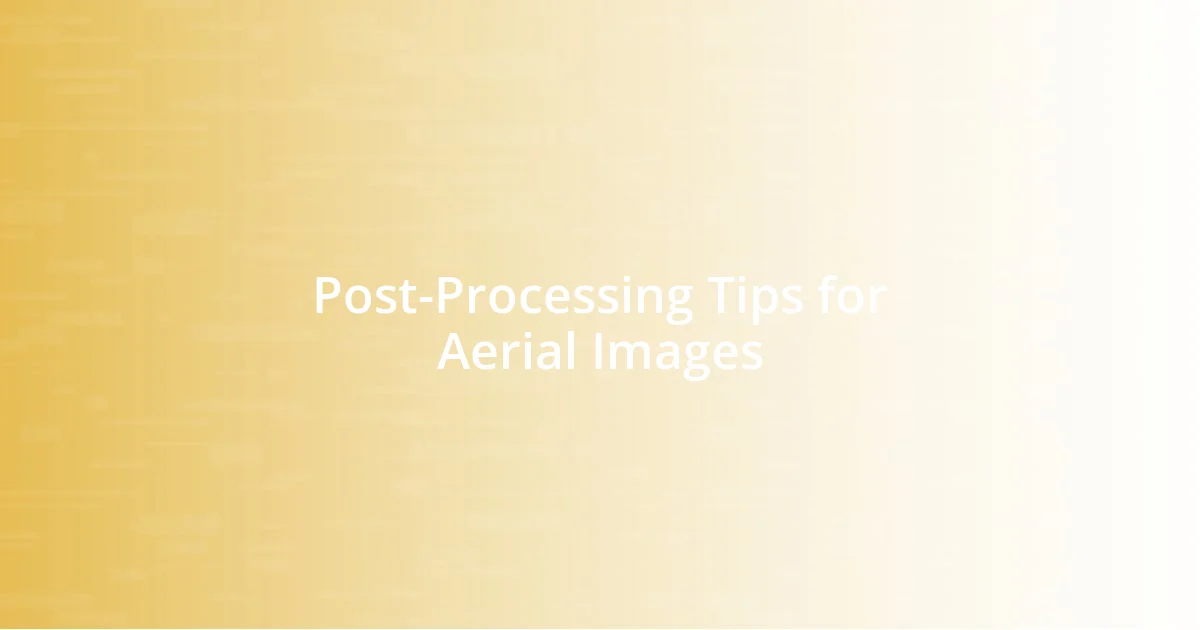
Post-Processing Tips for Aerial Images
When it comes to post-processing aerial images, I’ve discovered that subtlety is key. Using software like Lightroom or Photoshop, I often begin with basic adjustments—like fine-tuning exposure, contrast, and color saturation—to bring out the natural beauty of the scene. For instance, after a shoot over a golden wheat field, enhancing the greens and yellows allowed the vibrancy of the landscape to really pop, making the viewer feel like they could almost step into the frame.
I also love playing with the clarity and sharpness sliders. On one occasion, while editing photos from a dramatic cliffside shot, a small adjustment in clarity turned a beautiful image into something breathtaking. It added depth and ensured that the viewer’s eye was drawn to the intricate details of the rocks and crashing waves below. Have you ever felt that rush when you see an image transform right before your eyes? That’s the magic of post-processing.
Don’t underestimate the power of cropping as well. I’ve often found that a slight shift in framing during the editing phase can completely change the narrative of the photo. For example, I once captured a stunning sunset over a city skyline, but the initial composition felt off. I cropped closer to highlight just the skyline against the vibrant sky, and suddenly, the photo told a more compelling story. Experimenting with different compositions during post-processing can reveal new perspectives you hadn’t initially considered. Remember, each small tweak can make a world of difference in the impact of your aerial images.
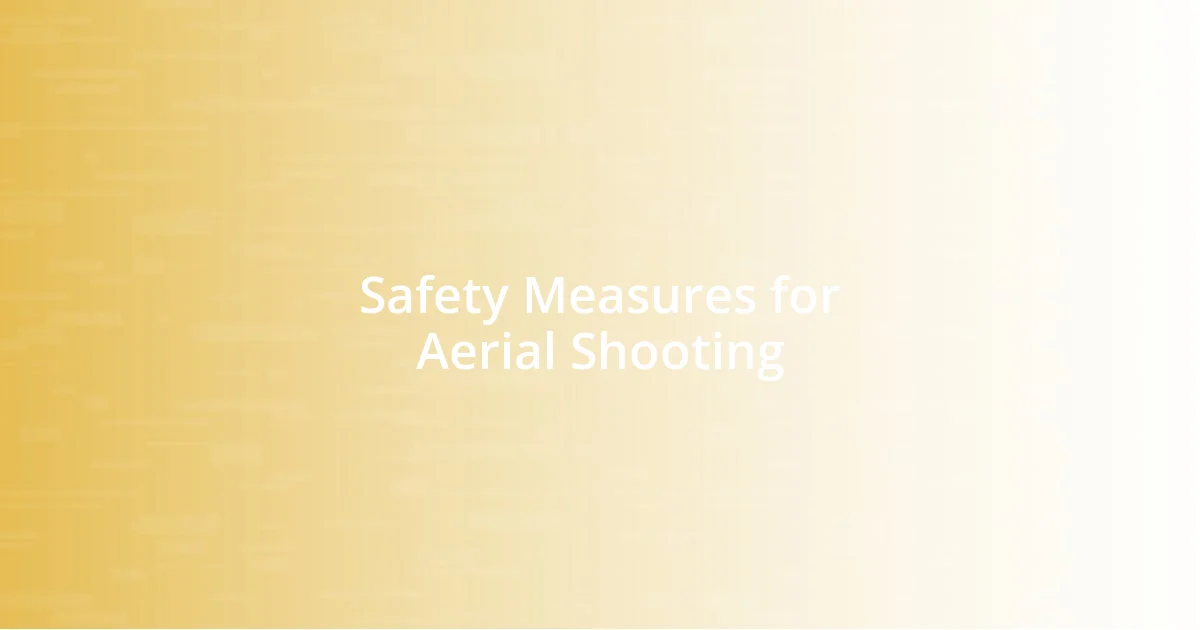
Safety Measures for Aerial Shooting
When it comes to aerial shooting, safety must always be a top priority. I remember my first time flying a drone over a crowded beach—my heart raced as I navigated the controls, but I kept reminding myself to maintain a safe distance from people. Establishing a buffer zone not only protects spectators but also helps keep your equipment safe from unexpected collisions. Have you considered how crucial it is to understand your surroundings before launching?
Weather conditions can be unpredictable, so always check the forecast prior to your flight. I once found myself caught in an unexpected gust of wind while shooting over a scenic valley. It was a nerve-wracking experience, as I struggled to stabilize the drone against swirling currents. Now, I always scout the weather beforehand and, if there’s any doubt, I err on the side of caution. Learning to recognize the signs of poor flying conditions has saved me—and my gear—more than once.
Additionally, familiarizing yourself with local regulations is essential. Each area has its own rules regarding height limits and no-fly zones, which can vary significantly. During one of my shoots near a wildlife sanctuary, I was amazed to learn about the strict guidelines in place to protect local fauna. Reading up on these regulations not only helps you avoid hefty fines but also fosters a deeper respect for the environment. How often do you take the time to educate yourself about the places you fly? It’s worth every minute spent in gaining knowledge for a more responsible aerial shooting experience.

Using Drones for Captivating Shots
Using drones has revolutionized the way we capture aerial shots; the perspective they offer is simply unmatched. I vividly recall my first time soaring above a misty forest at dawn. As I watched the golden rays of sunlight break through the trees, I was struck by how the drone transformed a regular snapshot into something almost ethereal. Is there anything more captivating than the interplay of light and shadow high above the earth?
The versatility of drone shots can genuinely elevate a project. For instance, I once filmed a wedding on a picturesque cliffside, using the drone to capture not just the couple but also the breathtaking landscape surrounding them. The sweeping shots added a cinematic quality to the video that wouldn’t have been possible with traditional photography. Have you experienced how certain angles can completely change the narrative of a moment?
Moreover, I’ve learned the importance of experimenting with motion. One time, while shooting a stunning coastline, I tried out a slight orbit around a rocky outcrop. The effect was mesmerizing. It felt like you were being given a personal tour of the area, revealing hidden gems that normally go unnoticed. Have you thought about how dynamic shots can engage viewers on a deeper level? By embracing motion and varying angles, we can craft stories that resonate long after the images are seen.



